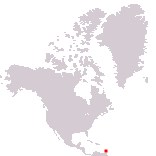Home > North America > Saint Lucia

Saint Lucia
Government type Parliamentary constitutional monarchy
Area 617 kmē (238 sq mi)
Population 165,600 inh. (2010 census)
Population 181,000 inh. (2024 est.)
Population density 293 inh/kmē (761 inh/miē)
Area 617 kmē (238 sq mi)
Population 165,600 inh. (2010 census)
Population 181,000 inh. (2024 est.)
Population density 293 inh/kmē (761 inh/miē)
Capital Castries (22,000 pop.)
Currency Eastern Caribbean dollar
Human development index 0.715 (106th place)
Languages English (official), Creole-French
Life expectancy M 75 years, F 77 years
Currency Eastern Caribbean dollar
Human development index 0.715 (106th place)
Languages English (official), Creole-French
Life expectancy M 75 years, F 77 years

Boundaries:
Surrounded by the Atlantic Ocean
GEOGRAPHY DATA OF SAINT LUCIA
Largest cities
Castries 22,000 pop.
Bisee 13,000 pop.
Highest mountains
Mount Gimie 950 m (3,117 ft)
Longest rivers
Roseau 21 km (13 mi)
Largest islands
Saint Lucia 616 kmē (238 sq mi)
Maria Island 0.10 kmē (0.04 sq mi)
